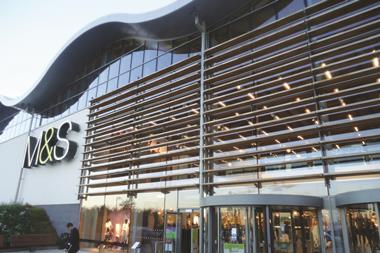Marks & Spencer has recorded its lowest annual profit since 2009, reporting a drop in underlying pre-tax profit to £665.2m. Retail Week rounds up how analysts have reacted to the news.
Beyond general merchandising we are much more content with M&S’ performance. Indeed, we believe that considerable progress has been made in both the nature and performance of the group. M&S has delivered a good performance in its food business, outperforming a tough British market with like-for-like sales growth of 1.7%, which in sales terms exceeds the value of the general merchandising activities we should add; steps forward have been made in beauty and home too. Additionally, taking into account the economic and so market challenges in Ireland and continental Europe, a sensible plan with some progress set against it has been put into place in the group’s international markets, whilst progress is underway online; aided by the commissioning of the ecommerce distribution centre at Castle Donington. Clive Black, Shore Capital Stockbrokers
We have a number of concerns with the new strategy on womenswear. It will, in our view, take time before the new womenswear ranges resonate with customers and possibly up to three seasons before we see any material upside to general merchandising like-for-like sales. It will also take time to attract the younger, freer spending consumers. M&S’s core customer has got older, has become more used to sporadic promotional activity and has become more focused on price rather than value for money. The new plan, we believe, will have cost implications which could potentially involve store refurbishments, a re-branding exercise and an increase in marketing costs. Freddie George, Cantor Research
We have been impressed by what we’ve heard and seen though, as ever with M&S, its success is highly dependent upon the execution of the strategy, as execution risks remain. The new website will launch post-Christmas and several of the programs to improve merchandising in store will not come to fruition for another year or two. The crux of the investment case remains - how much can they improve sales; do they have the right locations and amount of stores in the UK for an omni-channel retailing world; and how realistic is the prospect of free cashflow generation? If all goes to plan, we see free cashflow improving to nearly £600m pre dividends – a yield of over 8% in fiscal year 2014/15, which may keep investors happy. Caroline Gulliver, Espirito Santo
M&S needs to focus firmly on its UK business. On this ‘home front’ advancement is a little less encouraging and, in clothing at least, has seemed more like a gentle evolution than a radical reinvention.To be fair to M&S, some of the initiatives, such as the recent fashion launch, have only just been delivered and it will take some time for the commercial implications to be felt. However, we still believe M&S is nowhere near ambitions enough on the general merchandising front; in our view the company is too risk averse and is unwilling to break the mould of its traditional ways of doing business. Nowhere is this truer than in store where the shop floor needs a complete reinvention, above and beyond its concept stores.
The ultimate aim should be for M&S to feel much more like a department store with each of its own brands having an area which shows off their identity and personality. This would create better shopping experience and make products feel more exclusive. On this front we were discouraged to see a moderation of capital expenditure as we believe M&S now needs to invest more in the store environment in order to give its new ranges the best possible chance of success. Neil Saunders, Conlumino
After the good reviews for Marks & Spencer’s autumn womenswear range preview last week, attention turns today to the less happy subject of the poor profits outcome for year end March. The weak £665m profit before tax outcome, pre-exceptionals, for 2012/13 is a tad above consensus, but, needless to say, M&S call it “a year of strong progress”. It would have been a whole lot worse but for some impressive control of operating costs by finance director Alan Stewart, so the City won’t be too phased by the forecast that operating cost growth will pick up to 3.5% this year, partly because that has been expected, although the warning of £30m of double-running costs from the new warehouse will raise some eyebrows. The gross margin increase expected is pleasing, but everything now depends on producing some top-line growth. Helpfully M&S says that trading so far, over the last seven weeks, has been in line with its expectations, without saying what its expectations were. Nick Bubb, independent analyst
Marks & Spencer has repeatedly tried and failed to reinvigorate its fashion offering and appeal to a younger audience. Strong food sales have not been enough to offset the weak performance of its clothing range. Marc Bolland’s future with the retailer is likely to depend on whether the current efforts to turn the retailer around pay off. Initial signs for this latest revamp are encouraging. However, M&S is a large and difficult ship to turn and in the current conditions on the high street, any upturn in sales is hard to come by. Peter Saville, Zolfo Cooper
Marks & Spencer profits fall despite 1.3% increase in sales
- 1
- 2
- 3
- 4
- 5
- 6
- 7
 Currently reading
Currently readingMarks & Spencer full-year results: What the analysts say
































No comments yet